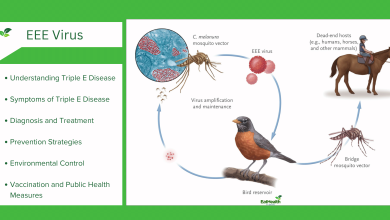The Art of Verbal Medicine: Enhancing Patient-Doctor Talks
Healing Words: Transforming Patient Care Through Verbal Medicine

Art of Verbal Medicine: Enhancing Patient-Doctor Talks
Effective communication lies at the heart of quality healthcare delivery. In the realm of medicine, the art of verbal communication between patients and doctors is crucial for building trust, fostering understanding, and facilitating optimal health outcomes. From conveying complex medical information in understandable terms to eliciting patient concerns and preferences, the way doctors communicate plays a significant role in patient satisfaction, compliance, and overall well-being. In this comprehensive guide, we will explore the art of verbal medicine, examining strategies and techniques for enhancing patient-doctor talks to promote better health outcomes and patient satisfaction.
Understanding Verbal Medicine
Verbal medicine refers to the use of language and communication skills by healthcare professionals to convey information, provide support, and establish rapport with patients. It encompasses a wide range of verbal interactions, including medical consultations, patient education sessions, and counseling sessions. Verbal medicine is not just about transmitting medical facts; it’s about connecting with patients on a human level, addressing their concerns, and empowering them to make informed decisions about their health. Just as we know The Power of Health Apps: Enhancing Patient Engagement
The Importance of Effective Communication in Healthcare
- Building Trust: Effective communication builds trust and rapport between patients and doctors, creating a safe and supportive environment where patients feel comfortable sharing their concerns and seeking guidance.
- Improving Patient Understanding: Clear and concise communication helps patients understand their medical condition, treatment options, and self-care instructions, empowering them to actively participate in their healthcare journey.
- Enhancing Patient Satisfaction: Patients who feel heard, understood, and respected by their doctors are more satisfied with their healthcare experience and are more likely to adhere to treatment plans and follow-up recommendations.
- Reducing Medical Errors: Clear communication helps prevent misunderstandings and errors in medical care, reducing the risk of adverse events and improving patient safety.
- Supporting Shared Decision-Making: Effective communication facilitates shared decision-making between patients and doctors, allowing patients to weigh the benefits and risks of treatment options and make choices aligned with their values and preferences.
Key Components of Effective Verbal Medicine
- Active Listening: Doctors should practice active listening, focusing on what patients are saying without interrupting or rushing to conclusions. Reflective listening techniques, such as paraphrasing and summarizing, can help clarify patient concerns and demonstrate empathy.
- Empathy and Compassion: Empathetic communication involves understanding and acknowledging patients’ emotions, validating their experiences, and expressing genuine concern for their well-being. Compassionate communication fosters trust and builds a strong patient-doctor relationship based on mutual respect and understanding.
- Clarity and Simplicity: Doctors should use clear, jargon-free language and avoid medical terminology that may confuse or overwhelm patients. Visual aids, diagrams, and analogies can help simplify complex medical concepts and enhance patient understanding.
- Non-Verbal Communication: Non-verbal cues, such as facial expressions, body language, and eye contact, convey important messages and emotions during patient-doctor interactions. Doctors should be mindful of their non-verbal cues and strive to maintain open, welcoming body language that encourages patient engagement.
- Shared Decision-Making: Involving patients in decision-making about their healthcare encourages autonomy and empowers them to take an active role in managing their health. Doctors should present treatment options, discuss risks and benefits, and collaborate with patients to develop personalized care plans that align with their goals and preferences.
Practical Strategies for Enhancing Patient-Doctor Talks
- Establishing Rapport: Begin each encounter by introducing yourself, addressing patients by name, and establishing rapport through friendly conversation and active listening.
- Setting the Agenda: Encourage patients to express their concerns and priorities at the beginning of the visit, allowing you to address their most pressing needs and allocate time accordingly.
- Using Open-Ended Questions: Ask open-ended questions to elicit detailed responses from patients and encourage them to share their thoughts, feelings, and experiences related to their health.
- Providing Information in Layers: Break down complex medical information into manageable chunks and present it in a step-by-step manner, checking for patient understanding and addressing questions along the way.
- Seeking Feedback: Solicit feedback from patients about their communication preferences and experiences, and be receptive to their input in order to continuously improve your verbal medicine skills.
Conclusion
In conclusion, the art of verbal medicine is an essential component of quality healthcare delivery, influencing patient satisfaction, adherence to treatment, and health outcomes. By mastering the principles of effective communication—such as active listening, empathy, clarity, and shared decision-making—doctors can enhance patient-doctor talks and foster positive relationships with their patients. As healthcare continues to evolve, investing in the development of verbal medicine skills is crucial for delivering patient-centered care and promoting the well-being of individuals and communities.




